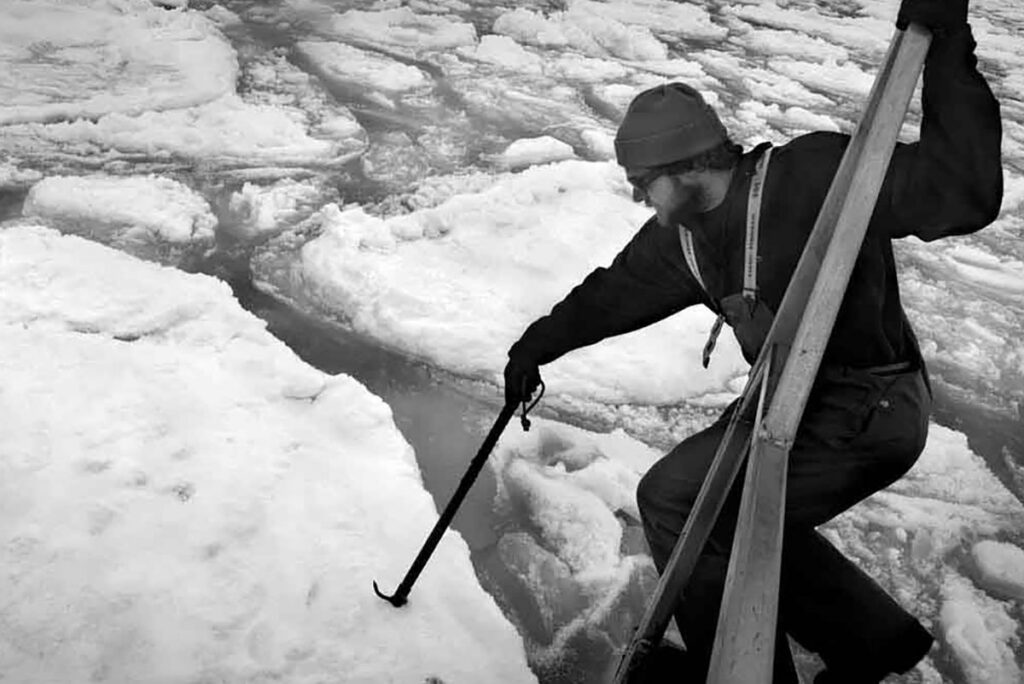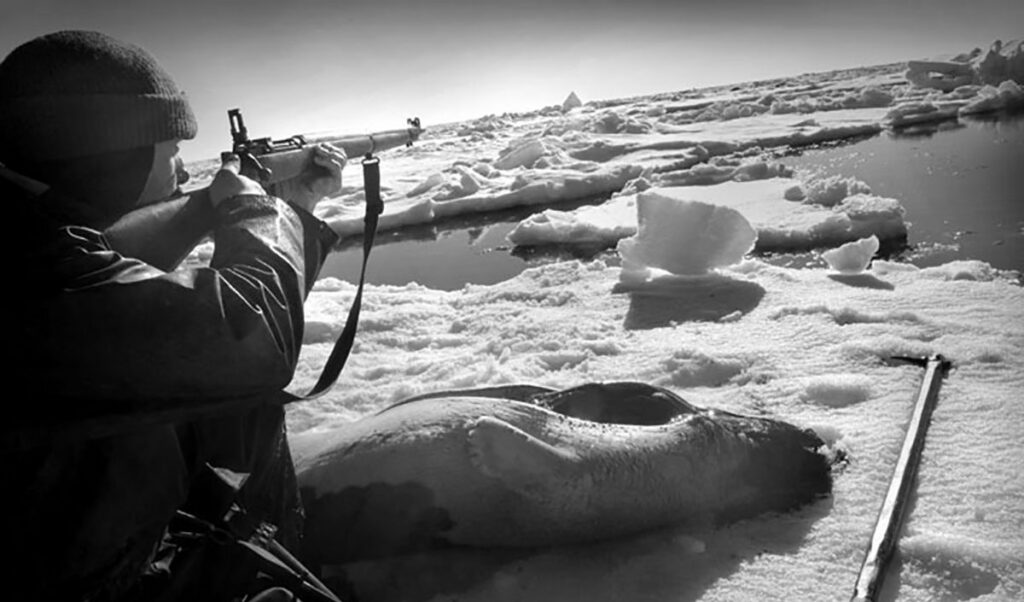The East Coast
Early European settlers of Newfoundland harvested seals. Seals were an important source of meat in a land that often did not provide much variety of food, and for years the seal hunt was for subsistence only — relied upon for those brave enough to stay on the island year-round.
But by the mid-1700s, seals were being transported to England and sold for their meat, pelts, and oil. Seal oil became prized as lamp oil, cooking oil, and an ingredient for soap. In 1793, the first schooners sailed to the seal herds of the the ice-packed North Atlantic. They were so successful that dozens of other boats followed suit, and the seal hunt became nearly as important to the economy of the colony as its summer cod fishery.
The work was intense, and dangerous. Sealers spent 12 hours or more at a time on the ice in all weather, harvesting seals which would be later picked up by their vessel.


